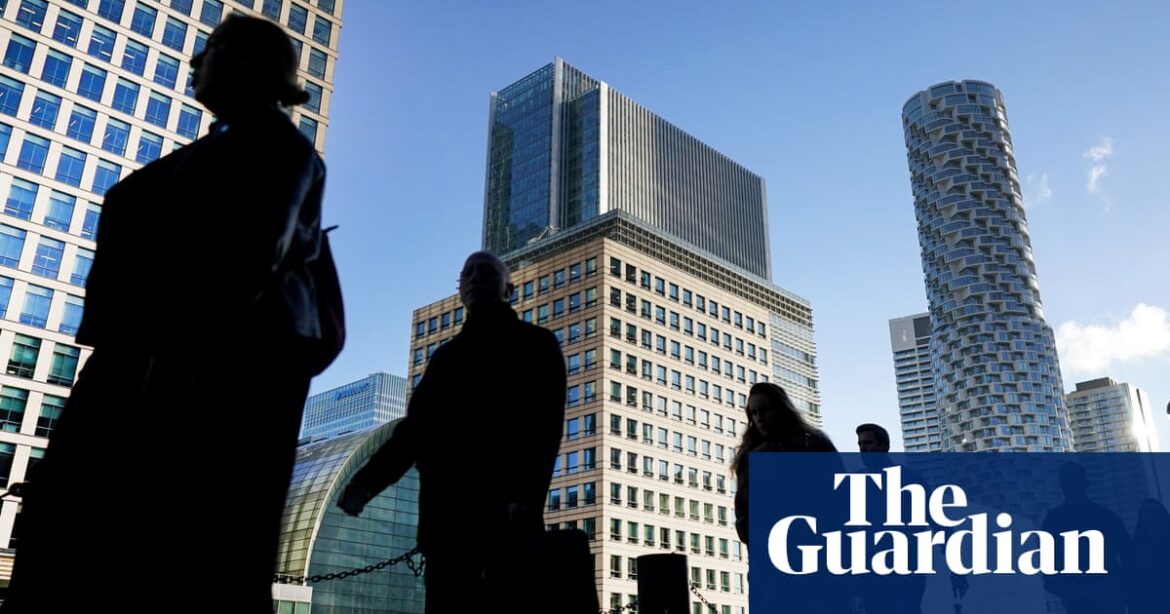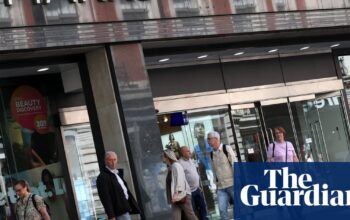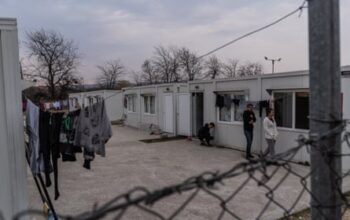
The unemployment rate in the UK has risen to its highest level in almost four years, according to official figures, as the jobs market continues to slow.
The Office for National Statistics (ONS) said the rate was 4.5% in first three months of this year, up 0.2% on the previous quarter and the highest reading since summer 2021.
Unemployment is measured using the ONS’s widely criticised Labour Force Survey, which has suffered from collapsing response rates – though the ONS published an update alongside Tuesday’s data citing “clear improvement”.
The higher joblessness rate emerged in a slew of UK labour market data released on Tuesday that pointed to a slowdown, amid increases to employer national insurance contributions (NICs) and the national living wage.
The number of vacancies in the economy was down 5.3% in the three months to the end of April, the ONS said. There were 761,000 job vacancies in that period, a 131,000 drop on a year ago, with the construction sector experiencing the biggest decline.
Pay growth also weakened, the ONS said, with regular earnings up 5.6% in the three months to March, down from 5.9% in the previous three-month period – though that remains high by historic standards.
Modestly weaker wage growth is likely to reassure the Bank of England’s monetary policy committee (MPC), who cut interest rates by a quarter point last week to 4.25% but have expressed concern about the continued strength of pay.
Thomas Pugh, an economist at the consultancy RSM UK, said: “Overall, the labour market is clearly cooling, which should feed into slowing wage growth through this year. But it isn’t collapsing. The hawks on the MPC will still be too concerned about strong wage growth to consider going for another rate cut in June.”
In another sign of a slowing labour market, the number of payrolled jobs declined, by 47,000, or 0.2%, between February and March – though the ONS said the overall employment rate, measured using the Labour Force Survey, was “largely unchanged” at 75%.
Stephen Evans, the chief executive of the Learning and Work Institute, said: “The labour market continues to slow, with the largest employment falls seen in retail and hospitality”. He added that these were also the sectors where pay growth has been fastest, as the minimum wage rise comes in.
“Time will tell whether this is an indicator of a broader slowdown or a temporary effect,” he said.
after newsletter promotion
The ONS said the economic inactivity rate, which has been a consistent concern of policymakers, was slightly lower, at 21.4% of the working age population – though remains above the levels seen before the Covid pandemic.
The Bank of England has been monitoring closely the impact on jobs and salaries of Rachel Reeves’s £25bn increase in employer NICs. The rise, which took effect last month, came alongside a 6.7% increase in the national living wage, prompting some business lobby groups to warn about rising payroll costs.
Michael Stull, the managing director of the recruitment company ManpowerGroup UK, said: “The latest labour market data confirms the sentiment of most British employers, whose confidence remains stunned against a backdrop of significant national change and global uncertainty.”
The ONS is facing an independent inquiry into longstanding problems with the quality of its data, including the Labour Force Survey. The national statistician, Ian Diamond, stepped down last week, citing health concerns.
Source: theguardian.com



